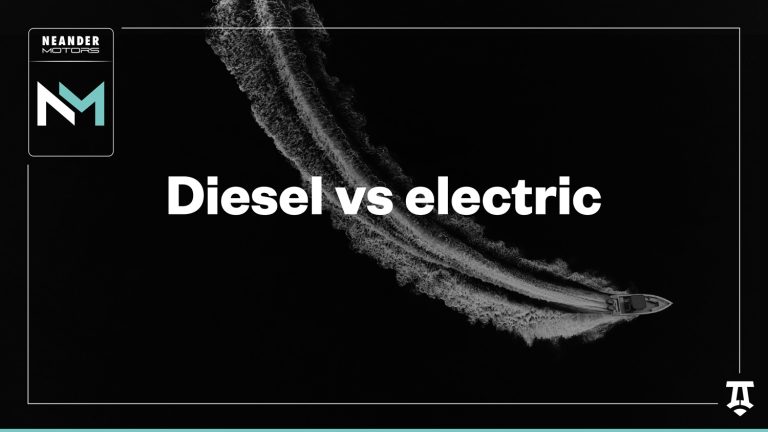Diesel vs electric – which is better?
We have this belief that the marine industry will go all-electric because the automotive industry is, but is that really a viable option for the commercial maritime industry?
Joel Reid, our Chief Operating Officer at Neander Motors, shares his views.
The rise of electric-powered technology has taken the world by storm, with new electric models joining the marine market, almost weekly, and we don’t expect this to slow down – particularly with a flurry of new battery-powered releases due from the major manufacturers in 2023 and beyond. However, we know that millions of vessels operate within the commercial marine space globally, and still, only a very small percentage of those are currently powered by electricity.
So, is one propulsion type better than the other, and can we expect to see this change anytime soon?
As with most things in life, there’s no one size fits all. To determine which is better, we really need to define the metrics we will be using and the application it will be used for. We can begin by looking at the most important factors, including power, price and range.
Traditionally, diesel powered vessels are equipped with powerful and efficient engines capable of shifting tough loads, due to having better torque for increased performance. Add to this the familiarity factor and the capability to refuel them in just minutes, rather than having to locate a source, be plugged in and wait, and it’s not difficult to see why they make up the main share of the market.
An advantage to electric powered vessels is minimal noise pollution and a quiet traveling experience, but many people are often surprised at how quiet the Neander Dtorque 50 motor is, despite being a diesel motor, and find it makes as a particularly good application for fish farming, oil and gas, as well as cruise ships tenders. And whilst electric powered motors may appear to be greener method, we mustn’t forget that we often use fossil fuel power stations to generate electric, and we certainly can’t wash over the fact many components of electric motors can be particularly bad for the environment, especially the extraction of minerals that make the batteries.
Although the running cost of an electric model may be cheap, the purchase price of a diesel motor is almost always cheaper than electric models because of how expensive it is to produce the large batteries. The sourcing of the raw materials and extraction is very costly and so is the production of the battery pack afterwards, both of which aren’t at the same level as the supply chain for fossil fuel motors.
The range of an electric powered motor is also limited, so you won’t be able to go as far on a single charge. Because of this there are applications more suited to diesel outboards. For example, electric makes more sense for a sailboat needing to use its motor to come into port, because the battery doesn’t need to be big, and is quicker to recharge. However, if you want to do a 100-mile cruise, it’s very hard to see how electric will make any sense. The vessel would have to be so heavy and much larger to accommodate the battery, so it would be a self-defeating purpose – not to mention very costly!
To be powerful enough and offer the required range, whilst being efficient for a commercial vessel, such as those used across the fishing, oil and gas, and military industry, or tenders for explorer cruise ships and superyachts, we would first need to create the technology to make batteries 20x lighter and safer.
To conclude, I think the future will have a place for everything. Until new technology has been developed, there are certainly different types of energy that are more appropriate for particular applications. It all depends on the kind of work you will be doing and the type of journeys your vessel(s) will be undertaking.
Here is the article in the September issue of Marine & Maritime Gazette on page 28: https://issuu.com/bljournals/docs/mmg_sept_22_lr_/28
